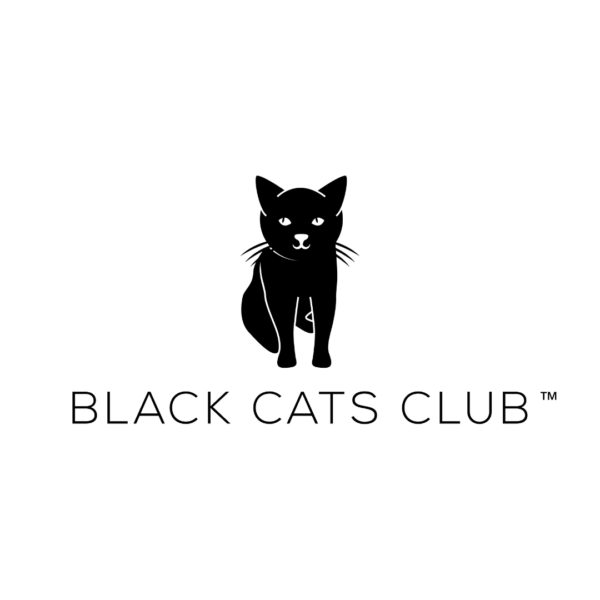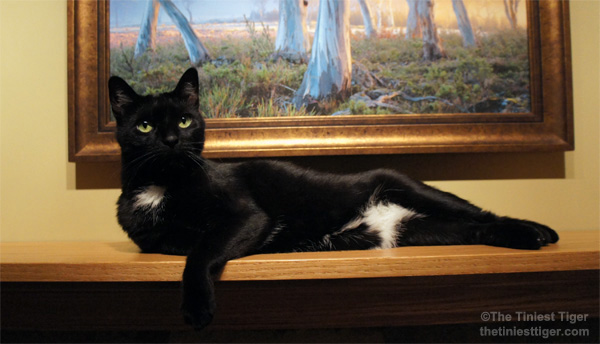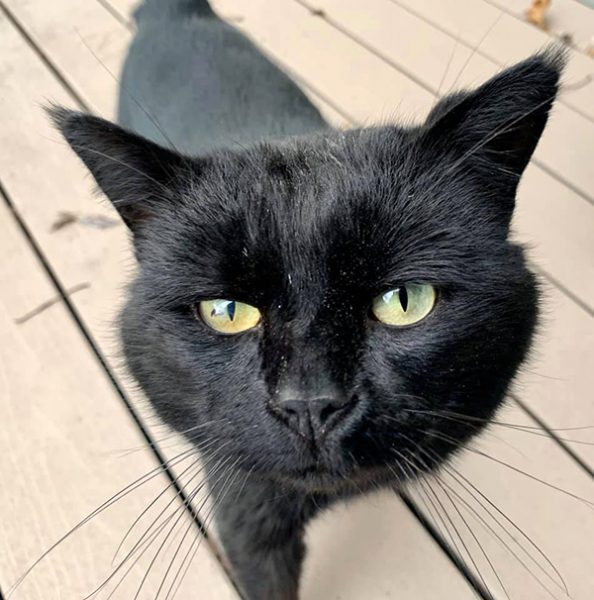
Black Cats in Cartoons: Iconic Feline Characters in Animation
Black cats have long held a special place in the world of animation and cartoons. Their enigmatic and often elusive nature has made them a popular choice for artists, who have used them as central characters, quirky sidekicks, or symbols of superstition and folklore. From the early days of animation, black cats have been a recurring presence, featuring in a range of popular and enduring cartoon series.
The history of black cats in cartoons is rich, complex, and occasionally fraught with controversy. It is important to appreciate the context in which these characters were conceived, as well as the changing societal attitudes towards race and representation. Despite some challenging aspects, many black cat characters have made a lasting impact on audiences everywhere, capturing the hearts of fans across generations.
Key Takeaways
- Black cats have been a significant part of animation history, featuring in various popular cartoons
- The role of black cats in animation has evolved with changing societal attitudes towards race and representation
- Many black cat characters continue to make a lasting impact on audiences, inspiring generations of fans.
Historical Context of Black Cats in Cartoons
Black cats have been a staple in the world of cartoons for many years. Their presence can be traced back to the early 20th century when animation was still in its infancy. One of the earliest examples of a black cat in cartoons is Felix the Cat, who made his debut in 1919. As a modern trickster, Felix’s character was influenced by the motif of black cats found in Industrial Workers of the World (IWW) cartoons, which were common at the time.
Over the years, black cats have continued to appear in various forms and shapes across different animation studios. For instance, Sylvester the Cat from Warner Bros. is another notable black cat character, although he is often portrayed as chasing the clever bird, Tweety. Similarly, Disney has explored jazz culture and utilized black cat characters in their works, such as the 1960s film The Aristocats. In this movie, a feline caricature of famous pianist Fats Waller serves as one of the central characters.
Political cartoons have also featured black cats as metaphors or symbols for various issues and sentiments. Cartoonist Lai’s “Fiji and the Misadventures of a Scrawny Black Cat” employs a black cat to represent the emotions and struggles of the Fijian people during a volatile period in the nation’s history. Such uses of black cats in the context of political cartoons demonstrate their significance as not just entertainment, but also as commentary on societal and political issues.
Even in the face of censorship or cultural sensitivities, the presence of black cats in animation remains strong and is often adapted to different contexts. With a rich history spanning over a century, these colorful and iconic characters leave a lasting impact on viewers and continue to be a notable aspect of cartoon history.
Stereotypes and Symbolism

Black cats in cartoons often carry stereotypes, racial or otherwise, that were prevalent in society during certain periods. One notable example from the search results includes Dr. Seuss’s famous character, the Cat in the Hat. This character, with its black fur and exaggerated mouth features, can be seen as symbolizing racial stereotypes prevalent during the time of its creation.
Another example of black cats used for racial and ethnic stereotypes can be seen in Disney’s Siamese cats, Si and Am. While not black cats, their portrayal and connection to orientalist mischief-making carry significant symbolism related to racial stereotyping. Their mannerisms and speech, which includes mispronunciation of English words, also play on the racist notion of non-Western individuals as uneducated and inferior.
In the history of American cartoons, black characters, whether they are cats or other animated figures, sometimes act as allegories for offensive racial stereotypes. These representations could range from portraying black characters as slow-witted to exhibiting exaggerated physical features associated with individuals of African descent. The influence of cultural context is important when considering the ways that certain stereotypes persist in animation.
Black cats, due to their close connection to the occult and superstitions, can be analyzed through another lens in terms of symbolism. Their presence in pop culture could be seen as highlighting humanity’s innate fascination and fear of the unknown. By associating them with certain racial stereotypes, creators could be commenting on their perception of the intersection between superstition and racial limitations.
In summary, black cats in cartoons have been used as a way to embody and convey racial stereotypes and symbolism present in society during the respective timeframes in which they were created. Understanding these cultural influences and their impact on pop culture representations is critical to addressing and reversing such negative portrayals in the future.
Prominent Black Cats in Animation
Felix The Cat
Felix the Cat is one of the earliest and most iconic cartoon characters, first appearing in silent films during the 1920s. He is a black cat with a mischievous grin and a penchant for getting into various comedic situations. Felix was created by Otto Mesmer and Pat Sullivan, and his popularity helped define early animation, making him a household name.
Salem in Sabrina The Teenage Witch
Salem Saberhagen, a black cat from the TV show “Sabrina the Teenage Witch,” is a well-known animated and live-action character. Voiced by Nick Bakay, Salem is a former witch who was turned into a cat as punishment for attempting to take over the world. He serves as a loyal companion, comic relief, and occasional advisor to Sabrina Spellman, the teenage witch.
Snowball II from The Simpsons
In the long-running animated sitcom “The Simpsons,” Snowball II is the family’s second black cat. She was adopted as a replacement after the original Snowball passed away. Snowball II, named in honor of the first Snowball, is often featured as a minor character in various episodes, providing subtle humor and occasionally interacting with other Simpson family pets.
Jiji in Kiki’s Delivery Service
Jiji is the lovable black cat companion of Kiki, the young witch protagonist from the beloved 1989 Studio Ghibli film “Kiki’s Delivery Service.” Directed by Hayao Miyazaki, the movie features Jiji as Kiki’s witty sidekick who provides support and advice as Kiki starts her own delivery service. Jiji’s intelligence and charm make him an unforgettable character in the world of animation.

Cultural Impact and Influence
The presence of black cats in cartoons has played a significant role in shaping popular culture. Often depicted with mischievous or mysterious personalities, these feline characters have tapped into people’s fascination and folklore surrounding black cats.
Historically, black cats have been associated with superstitions and various beliefs in different cultures. In Western societies, they were often seen as symbols of bad luck and were sometimes connected to witchcraft. Cartoons have utilized these connotations, giving black-cat characters a hint of mystique that makes them intriguing to audiences.
One of the most well-known black cats in animation is Sylvester from Warner Bros. Cartoons. As a clever, yet constantly thwarted, feline trying to catch Tweety Bird, Sylvester’s antics have entertained audiences for decades. His character has had significant influence on later depictions of animated cats, showcasing their cunning and determination.
Another aspect worth noting is the portrayal of racial and cultural stereotypes in some animated cartoons featuring black cats. This can be observed in the use of African-American folktales, music, and certain visual cues. It’s important to recognize that such representations might contribute negatively to the perpetuation of racial stereotypes. However, modern creators are more mindful of these issues and are working towards inclusive and respectful characterizations in their works.
As animated content continues to evolve, black cats in cartoons remain a part of the storytelling tradition. Their roles reflect the broader cultural influences and changing societal values, bridging the gap between folklore and modern interpretations. Animated black cats, both old and new, have left their mark on pop culture, solidifying their place in the rich tapestry of animated history.
Contemporary Representations
In recent years, the portrayal of black cats in cartoons has shifted away from the negative and offensive stereotypes that were once prominent. Today’s animation industry is more sensitive to issues of race and diverse representation, and this awareness is reflected in the way black cats are depicted in contemporary cartoons.
One example of a change in the representation of black cats in contemporary animation can be seen in the character of Luna from the popular anime series “Sailor Moon.” Luna is a charming, intelligent black cat who serves as a mentor and advisor to the show’s protagonist, Sailor Moon. Luna is a positive character, free from any racial stereotypes, and her character adds depth to the story.
Another noteworthy example of a black cat in modern animation is the character of Jiji from the acclaimed Studio Ghibli film “Kiki’s Delivery Service.” Jiji is a witty and clever black cat who serves as Kiki’s companion throughout her journey. As a character, Jiji is well-rounded and free from any negative racial implications.
It should also be noted that contemporary animators and storytellers are now more conscious of the potential impact of the characters they create. Consequently, they are more cautious in their portrayals of racial and cultural identities, ensuring that their creations are not rooted in offensive stereotypes.
In summary, the representation of black cats in contemporary animation is considerably different from the past. The industry’s increased sensitivity to issues of race and diverse representation has led to more positive and well-rounded portrayals of black cats in cartoons, reflecting a significant shift in attitudes and artistic approaches. This change has led to a richer and more inclusive storytelling landscape in contemporary animation.
Changing Perceptions Through Cartoons
Cartoons have a significant impact on shaping societal views, and the portrayal of black cats in these animated works is no exception. Traditionally, black cats have been associated with superstition, bad luck, and even witchcraft. However, their depiction in cartoons has evolved over time, reflecting and influencing cultural changes as well.
A notable example is Felix the Cat, one of the most popular cartoon characters from the early 20th century. Felix is a black cat known for his mischievous nature and resourcefulness. The character experienced several periods of revival, demonstrating how animation adapts to changing societal perceptions. While Felix may not have single-handedly altered the image of black cats, he played a part in making them more endearing to the public.
Political cartoons also provide insight into how the portrayal of black cats can be manipulated to convey different messages. For instance, a political cartoon may utilize the image of a scraggly black cat to symbolize bad luck or negative outcomes. This reinforces the age-old stereotype of black cats as harbingers of misfortune, while also allowing the artist to illustrate their point.
On the other hand, modern cartoons often challenge these negative associations by featuring black cats in more positive roles. This shift can be observed in mainstream animated productions, where black cats are depicted as loveable pets, trusted companions, or even heroes. By doing so, animators are helping reshape society’s attitudes toward these historically maligned creatures.
In conclusion, the representation of black cats in cartoons has experienced substantial change over time, reflecting shifting societal perspectives. By both reflecting and influencing our cultural environment, these portrayals contribute to the evolving image of black cats in popular media and public perception.

Conclusion
In the world of animation, black cats have often held a unique place. They have been portrayed in various roles and have left a mark on the history of cartoons. The presence of black cats in these animated works highlights the influence of popular culture and folklore, while also showcasing the creative expressions of animators.
One notable example is Tom from the “Tom and Jerry” series, where the black cat Butch is portrayed as a homeless antagonist. This depiction highlights the use of color to emphasize the “villain” character stereotype. However, it also shows that even within these constraints, animators have managed to develop nuanced portrayals of characters, imbuing them with depth and complexity.
The Hungarian cartoon “Cat City” offers another example of how black cats have been used as a motif in animation. In this work, the central conflict is between cats and mice, and the black cats play a significant role. This demonstrates the enduring relevance of black cats in cartoons and the various ways in which they are used to convey meaning and serve as crucial elements within the narrative.
Overall, the presence of black cats in cartoons reflects not just cultural and historical influences, but also the artistic creativity and skill of the animators who bring these characters to life. With a rich history and countless iconic appearances, black cats will undoubtedly continue to feature in the world of animation for years to come, maintaining their status as symbols of intrigue, mystery, and adventure.
Frequently Asked Questions
Who are some famous black cat cartoon characters?
Some famous black cat cartoon characters include Felix the Cat, an iconic character created in the silent movie era; Bucky from the comic strip “Get Fuzzy”; Snowball II from “The Simpsons”; and Jiji, the talking black cat from the anime film “Kiki’s Delivery Service.”
What are popular names for black cats in cartoons?
Popular names for black cat characters in cartoons include Salem from “Sabrina the Teenage Witch”; Binx from the film “Hocus Pocus;” and Figaro, the black and white tuxedo cat from the classic Disney film “Pinocchio.” These names often reflect the mysterious and magical nature of black cats in popular culture.
Which black cat characters have appeared in movies?
In addition to Binx from “Hocus Pocus” and Figaro from “Pinocchio,” other black cat characters that have appeared in movies include Jiji from “Kiki’s Delivery Service” and Luna from the animated series and films of “Sailor Moon.”
What are some memorable 90s black cat cartoons?
During the 1990s, memorable black cat cartoons included “Sabrina the Teenage Witch,” which featured Salem, a talking black cat; and the animated TV show “Gargoyles,” which featured a character named Demona who could transform into a black panther.
What Disney movies feature a black cat?
Disney movies that feature a black cat include “Pinocchio,” with Figaro the black and white tuxedo cat, and “Cinderella,” which features a black cat named Lucifer.